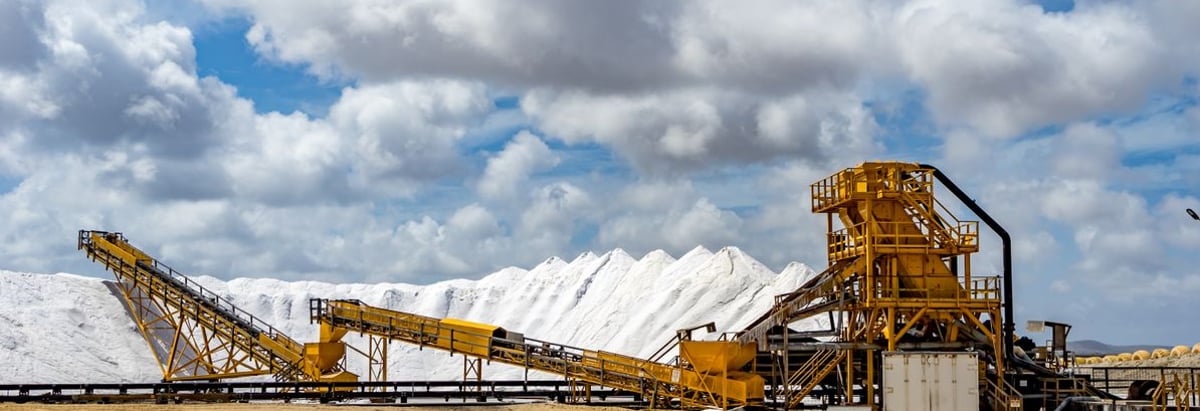- United Kingdom
- /
- Metals and Mining
- /
- AIM:AAZ
Who Are Anglo Asian Mining PLC's (LON:AAZ) Major Shareholders?

I am going to take a deep dive into Anglo Asian Mining PLC’s (AIM:AAZ) most recent ownership structure, not a frequent subject of discussion among individual investors. The impact of a company's ownership structure affects both its short- and long-term performance. The same amount of capital coming from an activist institution and a passive mutual fund has different implications on corporate governance, which is a decisive factor for a long-term investor. It also impacts the trading environment of company shares, which is more of a concern for short-term investors. Therefore, it is beneficial for us to examine AAZ's ownership structure in more detail.
See our latest analysis for Anglo Asian MiningInstitutional Ownership
Institutions account for 46.81% of AAZ's outstanding shares, a significant enough holding to move stock prices if they start buying and selling in large quantities, especially when there are relatively small amounts of shares available on the market to trade. However, as not all institutions are alike, such high volatility events, especially in the short-term, have been more frequently linked to active market participants like hedge funds. For shareholders in AAZ, sharp price movements may not be a major concern as active hedge funds hold a relatively small stake in the company. Although this doesn't necessarily lead to high short-term volatility, we should dig deeper into AAZ's ownership structure to find how the remaining owner types can affect its investment profile.Insider Ownership
Insiders form another group of important ownership types as they manage the company's operations and decide the best use of capital. Insider ownership has been linked to better alignment between management and shareholders. A major group of owners of AAZ is individual insiders, sitting with a hefty 40.13% stake in the company. Broadly, insider ownership of this level has been found to negatively affect companies with consistently low PE ratio (underperforming). And a positive impact has been seen on companies with a high PE ratio (outperforming). Another aspect of insider ownership is to learn about their recent transactions. Insiders buying company shares can be a positive indicator of future performance, but a selling decision can simply be driven by personal financial needs.General Public Ownership
The general public, with 9.47% stake, is also an important group of shareholders in AAZ. This size of ownership, while considerably large for a public company, may not be enough to change company policy if the decision is not in sync with other large shareholders.Private Company Ownership
Another group of owners that a potential investor in AAZ should consider are private companies, with a stake of 3.59%. While they invest more often due to strategic interests, an investment can also be driven by capital gains through share price appreciation. However, an ownership of this size may be relatively insignificant, meaning that these shareholders may not have the potential to influence AAZ's business strategy. Thus, investors not need worry too much about the consequences of these holdings.Next Steps:
The company's high institutional ownership makes margin of safety a very important consideration to existing investors since long bull and bear trends often emerge when these big-ticket investors see a change in long-term potential of the company. This will enable shareholders to comfortably invest in the company while avoid getting trapped in a sustained sell-off that is often observed in stocks with this level of institutional participation. However, ownership structure should not be the only determining factor when you’re building an investment thesis for AAZ. Rather, you should be examining fundamental factors such as the intrinsic valuation, which is a key driver of Anglo Asian Mining’s share price. I urge you to complete your research by taking a look at the following:
- Financial Health: Is AAZ’s operations financially sustainable? Balance sheets can be hard to analyze, which is why we’ve done it for you. Check out our financial health checks here.
- Past Track Record: Has AAZ been consistently performing well irrespective of the ups and downs in the market? Go into more detail in the past performance analysis and take a look at the free visual representations of AAZ's historicals for more clarity.
- Other High-Performing Stocks: Are there other stocks that provide better prospects with proven track records? Explore our free list of these great stocks here.
New: Manage All Your Stock Portfolios in One Place
We've created the ultimate portfolio companion for stock investors, and it's free.
• Connect an unlimited number of Portfolios and see your total in one currency
• Be alerted to new Warning Signs or Risks via email or mobile
• Track the Fair Value of your stocks
Have feedback on this article? Concerned about the content? Get in touch with us directly. Alternatively, email editorial-team@simplywallst.com
Simply Wall St analyst Simply Wall St and Simply Wall St have no position in any of the companies mentioned. This article is general in nature. We provide commentary based on historical data and analyst forecasts only using an unbiased methodology and our articles are not intended to be financial advice. It does not constitute a recommendation to buy or sell any stock and does not take account of your objectives, or your financial situation. We aim to bring you long-term focused analysis driven by fundamental data. Note that our analysis may not factor in the latest price-sensitive company announcements or qualitative material.
About AIM:AAZ
Anglo Asian Mining
Engages in the exploration and production of mineral properties in Azerbaijan.
High growth potential with mediocre balance sheet.


